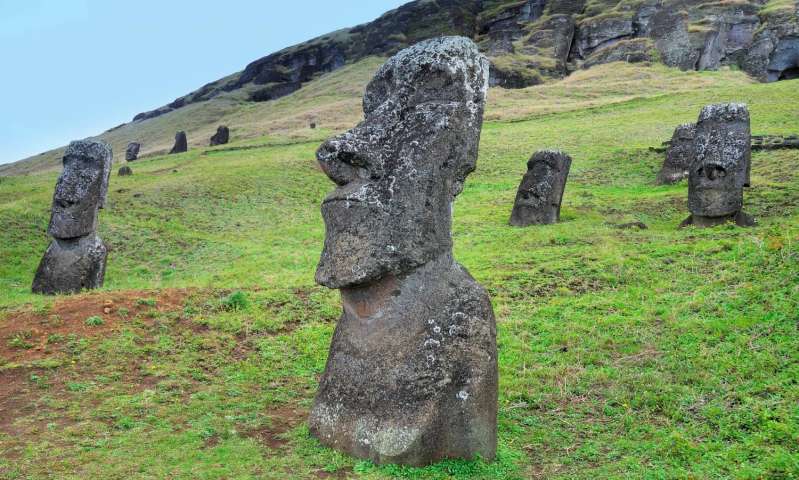At https://archaeologynewsnetwork.blogspot.co.uk/2017/09/solving-easter-isl… … Easter Island, or Rapa Nui, have been a mystery ever since Europeans first landed there in 1722. Early visitors estimated the p[opulation at around 1500 to 3000 souls. However, there are about 900 giant statues around the island ….
 … so how could such a small community have constructed, transported and erected so many of them? A new study in the journal Frontiers in Ecology and Evolution has estimated the population could have been up to 17,500 people – a considerable jump in numbers. They used the cultivation of sweet potatoes, the staple diet food item, to arrive at this figure. Using soil sampling they were able to work out 19 per cent of the island could have been used to grow sweet potatoes and extrapolated the results – arriving at the new population number. This leaves another mystery – why did numbers decline so dramatically? One explanation might be the Little Ice Age – in particular the cold years of the 17th century (which included the Maunder Minimum and excessively cold weather around 1640-44. Did bad weather blowing in from the south (and the Southern Ocean) cause a loss of production of sweet potatoes – a semi tropical plant. Untimely frosts for several years in succession could have created famine conditions. No need to speculate about ecological suicide or plantation owners raiding the island for workers. Sweet potatoes do not usually grow outside in Britain and NW Europe in general – but can be grown under glass or in plastic poytunnels.
… so how could such a small community have constructed, transported and erected so many of them? A new study in the journal Frontiers in Ecology and Evolution has estimated the population could have been up to 17,500 people – a considerable jump in numbers. They used the cultivation of sweet potatoes, the staple diet food item, to arrive at this figure. Using soil sampling they were able to work out 19 per cent of the island could have been used to grow sweet potatoes and extrapolated the results – arriving at the new population number. This leaves another mystery – why did numbers decline so dramatically? One explanation might be the Little Ice Age – in particular the cold years of the 17th century (which included the Maunder Minimum and excessively cold weather around 1640-44. Did bad weather blowing in from the south (and the Southern Ocean) cause a loss of production of sweet potatoes – a semi tropical plant. Untimely frosts for several years in succession could have created famine conditions. No need to speculate about ecological suicide or plantation owners raiding the island for workers. Sweet potatoes do not usually grow outside in Britain and NW Europe in general – but can be grown under glass or in plastic poytunnels.
